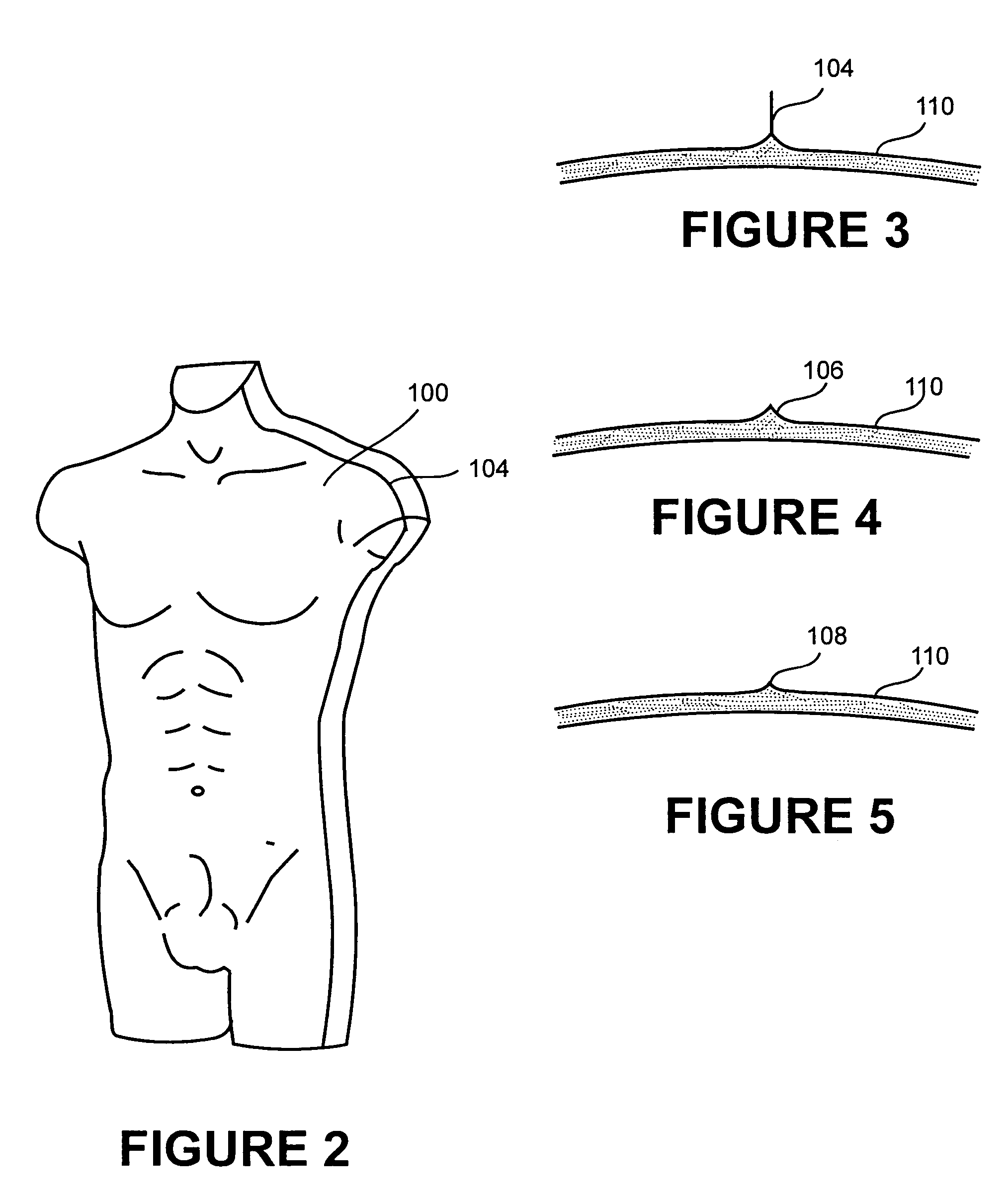Molded display forms
- Summary
- Abstract
- Description
- Claims
- Application Information
AI Technical Summary
Benefits of technology
Problems solved by technology
Method used
Image
Examples
example 1
Deflection, Impact, Flexural Properties
ASTM D 648-98, Deflection Temperature Under Load (DTUL)
[0093] This test method determines the temperature at which deformation of the material occurs under a controlled set of conditions. A higher temperature indicates that the material remains rigid even at elevated temperatures. A lower temperature indicates that the material is more rubbery and easily deformed.
ASTM D 256-97, Izod Impact (Method A)
[0094] This test method determines the energy necessary to break a sample in a controlled medium velocity impact. In Method A, a small notch is placed in the specimen. Notches increase the local stress level, typically producing brittle failure in some polymers. Notches act as stress concentrators, creating weaknesses, and are common (though undesired) features in molded parts. This test is similar to what happens when a part is dropped on a hard floor. High values correspond to tough materials that can better tolerate molded inserts and desig...
example 2
ASTM D 635-98, Linear Burn Rate
[0097] This test measures the response of a plastic material to burning in the horizontal position. This method was originally developed for plastic devices and appliances. This test is used to determine preliminary acceptability of a material in its final geometry. A low number indicates a less flammable material and a high number indicates that the material burns easily. Results are shown in Table 3.
TABLE 3Linear Burn RateSamplemm / min.187239319
example 3
Thermal Aging and Deformation
[0098] Two types of thermal aging tests have been conducted. Test A was a cyclic aging test. In this procedure the mannequins were subject to 32□F for six hours and then subject to 120□F for six hours. This cycle was repeated every 12 hours for 21 days (42 cycles). In Test B the samples were subject to a constant temperature environment of 120□F for 21 days. In both tests the samples were upright (supported by a stand) and measurements were taken before and after exposure.
[0099] All three formulas tested experienced very little deformation under the constant temperature test.
[0100] In the cyclic test, both the prior art formulations showed stress relaxation type deformation from cyclic exposures.
[0101] The formulation of this invention showed negligible deformation in either test. Results are shown in Tables 4-6.
TABLE 4Test BTest A#1#1#1#1Pre-Post-Pre-Post-exposureexposureexposureexposure21 days at21 days atParameterCyclicCyclic120□F.120□ F.Stomach...
PUM
| Property | Measurement | Unit |
|---|---|---|
| Temperature | aaaaa | aaaaa |
| Fraction | aaaaa | aaaaa |
| Length | aaaaa | aaaaa |
Abstract
Description
Claims
Application Information
 Login to View More
Login to View More - R&D
- Intellectual Property
- Life Sciences
- Materials
- Tech Scout
- Unparalleled Data Quality
- Higher Quality Content
- 60% Fewer Hallucinations
Browse by: Latest US Patents, China's latest patents, Technical Efficacy Thesaurus, Application Domain, Technology Topic, Popular Technical Reports.
© 2025 PatSnap. All rights reserved.Legal|Privacy policy|Modern Slavery Act Transparency Statement|Sitemap|About US| Contact US: help@patsnap.com



